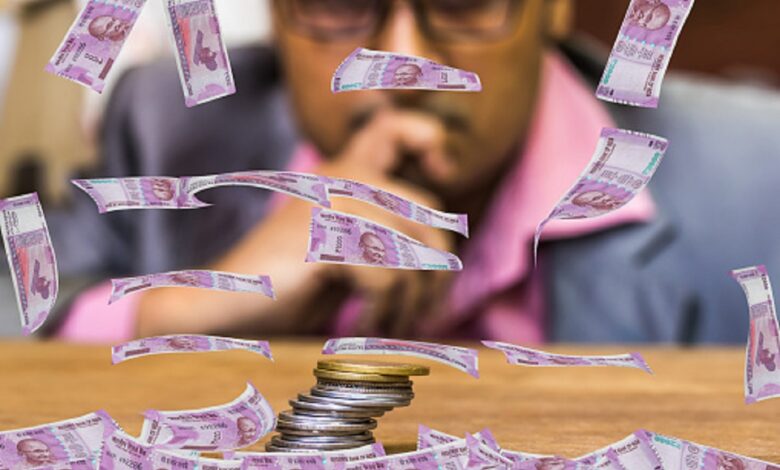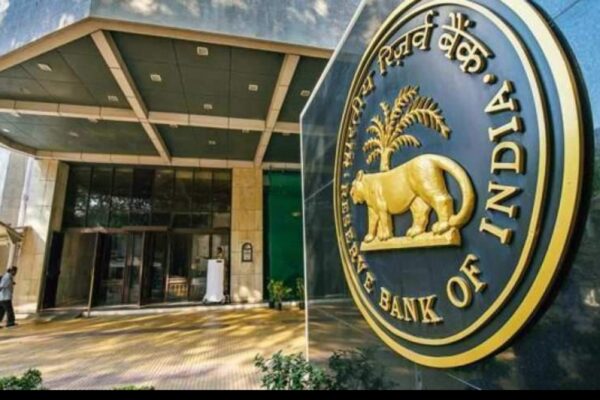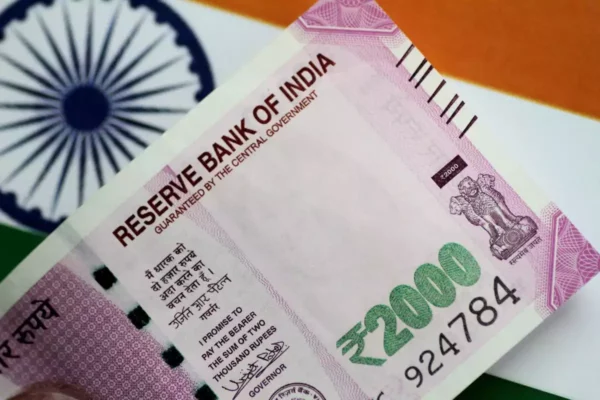India Central Bank Prepared To Spend $100 bn More Defending Rupee: Source

India Central Bank Prepared To Spend $100 bn More Defending Rupee: Source
A senior source familiar with the central bank‘s thinking reportedly told Reuters that the Indian central bank is prepared to sell a sixth of its foreign exchange holdings in order to prevent the rupee from falling sharply after it recently touched historic lows.
The rupee drops 13 paise and closes at 80 against the dollar for the first time.
Today’s strengthening of domestic equity markets and the recent depreciation of the US dollar against other major currencies helped the rupee move higher to 79.93 per US dollar.
The rupee recovered from Tuesday’s record low of 80.06 thanks to stable stock markets, foreign money flowing into stocks, a declining dollar index, and maybe RBI assistance.
In intraday spot trading on Tuesday, the rupee fell for the first time to a low of 80 against the US dollar before closing the session at 79.95. At $580.252 billion, India’s foreign exchange holdings were down $27.05 billion from March-end 2022.
The main causes of the steep decline in the Indian currency, which has breached the critical 80 levels, were “substantial dollar demand from oil-importing countries notwithstanding inflated crude oil prices and difficulties regarding bloated trade deficit.” claims Sugandha Sachdeva, Vice President – Commodity and Currency Research, Religare Broking Ltd.
Despite recent days of weakening, the dollar index is still at high levels.

“FPI selling appears to have hit bottom. FPIs were acquired on 5 days this month. FPIs are probably going to be convinced to purchase rather than sell when the dollar index declines to 106.6 from above 108, according to VK Vijayakumar, Chief Investment Strategist at Geojit Financial Services.
On Tuesday, shares worth Rs. 976 crores were bought by foreign institutional investors, creating a net buying activity in the stock market. On a net basis, FIIs acquired shares on Monday for 156.08 crore rupees.
The Federal Reserve’s relentless monetary tightening and the following race by investors to sell riskier assets in favor of dollars are what is fueling the broad and persistent U.S. dollar surge that is forcing the rupee to weaken in line with what is happening globally.
The rupee lost more than 7% of its value in 2022 on Tuesday, breaking through the crucial level of 80 against the US dollar. However, according to the source, the loss would have been much higher if the Reserve Bank of India (RBI) had not intervened to arrest the drop.
From their peak of $642.45 billion in early September, the RBI’s currency reserves have decreased by more than $60 billion, primarily as a result of dollar selling intervention but also as a result of value changes.
The Reserve Bank of India (RBI) is confident that it can halt any rapid, abrupt devaluation of the rupee thanks to its $580 billion in reserves, which still place it sixth in the world despite the decrease.
They have demonstrated their willingness to use reserves to reduce currency volatility if necessary. The source asserts that they are in possession of the necessary equipment and have shown a readiness to utilize it.
The source said that, in order to stabilize the currency, the RBI might have to invest over $100 billion.

The insider claims that the RBI will take action to stop any severe currency depreciation rather than attempting to protect the rupee or maintain it at a particular level.
A request for comment from the RBI was not immediately complied with.
The Federal Reserve’s relentless monetary tightening and the ensuing race by investors to sell riskier assets in favour of dollars are driving the broad and persistent US dollar rally that is causing the rupee to decline in line with what is happening elsewhere.
India’s trade and current account deficits seem set to get worse given the rise in commodity prices, particularly oil, which makes up a significant chunk of India’s import bill as a result of the Russia-Ukraine situation.
Although inflation has been above the midpoint target for almost three years and growth momentum is still strong, a significant portion of the rupee’s decline is undoubtedly related to the US dollar’s strength and higher oil prices, according to Charu Chanana, a markets strategist at Saxo Capital Markets.
“This trend could reverse as the dollar climbs,” according to the continuing strength of India’s macroeconomic fundamentals.
The trade deficit has been averaging $25 billion per month since January, which indicates that a $100 billion intervention fund to directly counter the demand for dollars would be ineffective after just four months. About $30 billion in shares are sold by foreign investors in 2022.
Worse yet to come
Despite the Reserve Bank of India’s (RBI) intention to defend the rupee and India’s good macroeconomic fundamentals, Most economists and traders think the rupee’s worst days are still ahead of it.
Given the global context of rate increases and quantitative tightening, it is quite improbable that foreign portfolio investors will return to India quickly, according to a top trader located in Singapore.
Authorities anticipate that foreign investors will return to the market in the next month or two after a number of actions by the government and the central bank, but investors are still hesitant.
“The money is flowing out of India as the US tightens its monetary policies. I’d engage in long dollar positions trading. There must be a mistake in the rupee’s value. We may easily hit 84 or 85 before the market turns, “said a second dealer.
RBI and the Center may take action to stop the decline in the currency.

To stop the rupee’s decline, the Reserve Bank of India (RBI) and the Centre may implement a number of one-time measures. Import restrictions on non-essential items, lowered thresholds for cumulative abroad investments by resident Indians, and requirements for exporters to send USD payments more quickly are a few examples.
If things continue to get worse, the central bank may consider measures like requesting importers to sell dollars directly to oil marketing companies or ordering exporters to immediately bring in their dollars, according to Bank of Baroda Chief Economist Madan Sabnavis.
Encourage Faster $ Remittance
In a free market other than ours, he claimed, “it’s difficult to prevent this kind of devaluation without imposing severe limitations on imports of particular commodities and services.”
The rupee has lost roughly 8% of its value this year, crossing the 80-dollar threshold in the midst of an unheard-of increase in the global reserve currency. The rupee has, undoubtedly, performed somewhat better than certain rival currencies, notwithstanding the global craze for assets backed by the dollar.
The rate of depreciation seems to have accelerated after the US Federal Reserve started raising the cost of borrowing money in an effort to rein in spiralling prices in the biggest economy on earth. This move hinted at historically high increases in policy rates.
In order to make sure exporters are not withholding their revenues, the central bank could instruct them to bring in dollars more rapidly, cutting the current nine-month period in half.
Edited by Prakriti Arora




